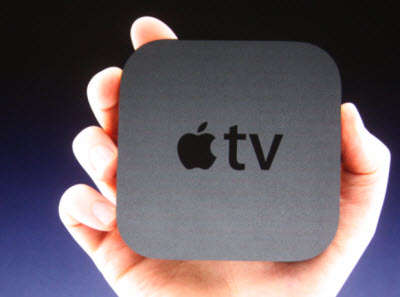
The Apple TV device has been referred to as a “hobby” by Apple in the past, but that doesn’t mean Apple won’t continue to slowly update the device with better specs to cater to fans. Apple TV lets owners stream content from their iTunes libraries and videos from YouTube, Netflix and Vimeo directly to a home TV.
[aditude-amp id="flyingcarpet" targeting='{"env":"staging","page_type":"article","post_id":339773,"post_type":"story","post_chan":"none","tags":null,"ai":false,"category":"none","all_categories":"media,","session":"C"}']A reference to the next-gen Apple TV found deep inside of iOS 5’s coding suggests a new version is on the way, according to a 9to5Mac report. The current version of the Apple TV device is listed as “2,1” while a new “3,1” version is listed in the iOS 5 software. A new version would include a dual-core A5 processor because it enables 1080p HD playback, the most noticeable deficiency to the Apple TV device. The current Apple TV’s A4 processor unfortunately only allows 720p HD playback.
It’s possible the new device listing could have something to do with an upcoming Apple-made television that we heard will almost certainly arrive in 2012. That device could easily integrate Apple TV’s best features like applications for streaming video services while providing another type of hardware for Apple fans to purchase. Our own Devindra Hardawar suggests the new Apple television will not replace your big-screen HDTV and will most likely will act as a secondary TV in your home. A television screen under 30 inches in size will be easier to manufacture and be ideal for bedrooms and kitchens.
AI Weekly
The must-read newsletter for AI and Big Data industry written by Khari Johnson, Kyle Wiggers, and Seth Colaner.
Included with VentureBeat Insider and VentureBeat VIP memberships.
Are you a fan of the Apple TV device? Would you buy a full-fledged Apple-made television?
VentureBeat's mission is to be a digital town square for technical decision-makers to gain knowledge about transformative enterprise technology and transact. Learn More